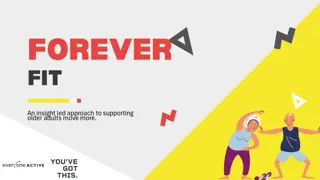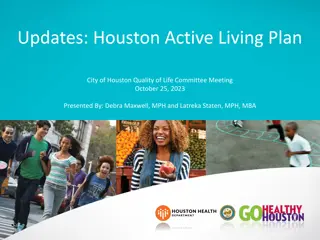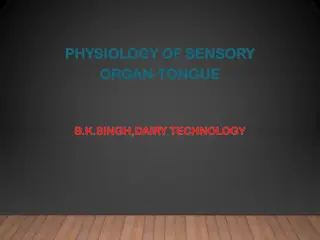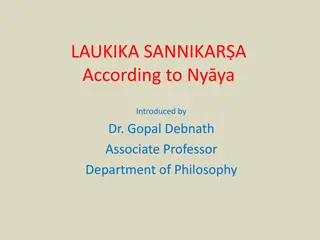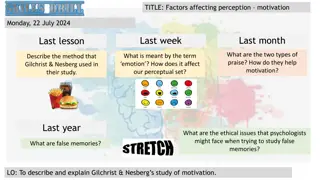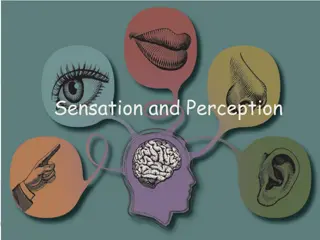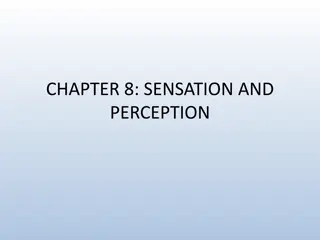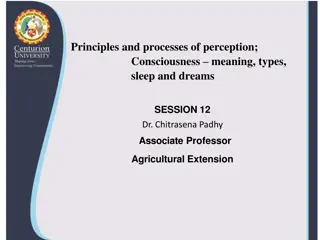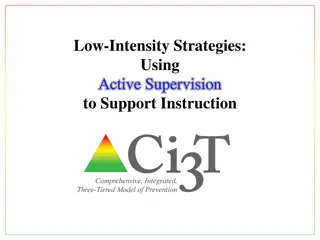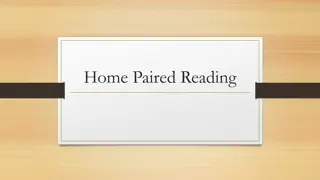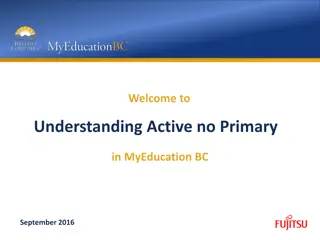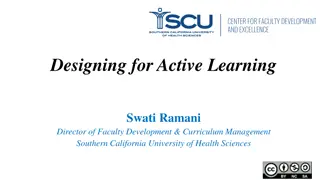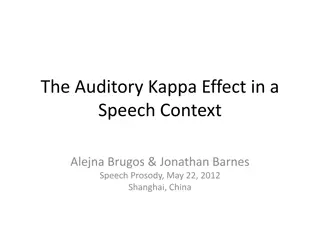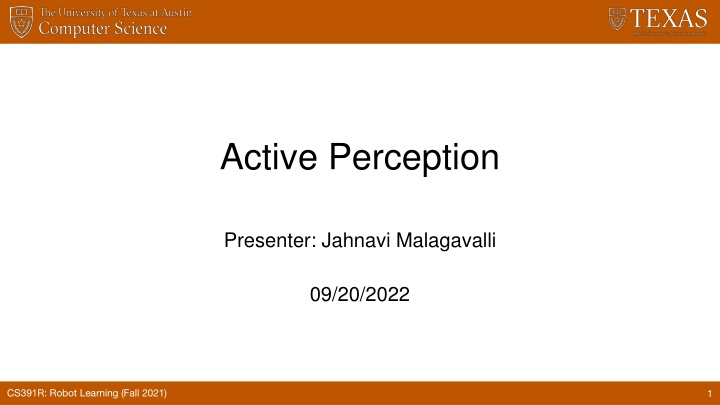
Active Perception and Robot Learning
Explore the importance of active perception in robot learning, why analysis of passively sampled data is not enough, and the need for agents to choose what to sense. Discover the concepts of active vision, problem setting in active sensing, and related work on limitations of prior research in active vision systems.
Download Presentation

Please find below an Image/Link to download the presentation.
The content on the website is provided AS IS for your information and personal use only. It may not be sold, licensed, or shared on other websites without obtaining consent from the author. If you encounter any issues during the download, it is possible that the publisher has removed the file from their server.
You are allowed to download the files provided on this website for personal or commercial use, subject to the condition that they are used lawfully. All files are the property of their respective owners.
The content on the website is provided AS IS for your information and personal use only. It may not be sold, licensed, or shared on other websites without obtaining consent from the author.
E N D
Presentation Transcript
Active Perception Presenter: Jahnavi Malagavalli 09/20/2022 CS391R: Robot Learning (Fall 2021) 1
Motivation Why is analysis of passively sampled data not enough for robot perception? Why does an agent need too choose what to sense? CS391R: Robot Learning (Fall 2021) 2
Motivation Cont.. Consider we trained a filter using ML to recognize a knife, from images and the filter has a success rate of 90% but this is not sufficient for an active perception-action system that needs to act and make changes to the world because 10% of the time the system will be acting on the wrong objects. Instead we can use this filter as an attention mechanism to suggest that a knife maybe in such location. This section analyses the components of an active vision system. CS391R: Robot Learning (Fall 2021) 3
Problem Setting Active Sensing is the problem of controlling strategies applied to data acquisition process which will depend on current state of the data interpretation and goal of the process Though this techniques applies to various modalities. The authors limits themselves to visual sensing hence the name active vision CS391R: Robot Learning (Fall 2021) 4
Related Work / Limitations of Prior Work A very little work was done on active sensing before 1988. Some of the works relevant were Action Vision This paper investigated typical computer vision problems like shape from shading, shape from texture, structure from motion etc. The principal assumption that they make is that the active observer moves with a known motion, and has available more than one view, i.e., more data. Hence, with more measurements taken in a controlled fashion, the ill-posed problems got converted into well-posed problems. Limitation - The motion of the machine should be known before hand. CS391R: Robot Learning (Fall 2021) 5
Related Work / Limitations of Prior Work The techniques using passive data had very limited success Example Shape from shading Even having 2 views of the image is not sufficient. The Accuracy will be limited to small baseline between the cameras. Assumption - Visible surface is smooth. Active Vision(by Aloimonos Et al) can overcome the limitation of the passive sensing because it can have multiple views and uses prior knowledge. Where as in this paper the active vision emphasis is in the study of modeling and control strategies for perception The surface generated by the algorithm from the synthetic image of the sphere. Pseudo gray-level image of a Lambertian sphere illuminated by a light source near the viewer. This is the synthetic image used as input to the algorithm. CS391R: Robot Learning (Fall 2021) 6
Algorithm: Local Model It is characterized by the internal parameters like width of filter band pass in the edge detection algorithm Global model characterizes overall performance and decides on how intermediate results are combined CS391R: Robot Learning (Fall 2021) 7
Theory Bottom Up Strategy Bottom-Up (Data Driven) A control strategy where no concrete semantic, context dependent model is available i.e we begin without any priori given task or request. The objective of the first case was to study the control strategies in the data driven situation of an Agile Camera system and how to combine information from different lowlevel vision modules, such as focus and stereo ranging Input - Vergence angle between the two cameras, Pan/Tilt of Up/Down motion and of Right/left motion, lambertian source parameters etc. Process Calculated stereo ranging is verified by focusing and calculated focus ranging is verified by stereo ranging. Output 3D points CS391R: Robot Learning (Fall 2021) 8
Experiments - Bottom-Up Strategy example Segmentation System The task and input parameters of each model are defined on a geometric goal. The boundaries detected using a interdependent process between edge detection and region formation modules The idea of feedback within a module and the interdependency between modules, implies multiple outputs and hence the need for fusion, i.e., combination rules CS391R: Robot Learning (Fall 2021) 9
Experiments - Bottom-Up Strategy Example Depth Maps Obtaining Depth Maps - Objective is to study the control strategies in a data driven situation of a camera system and how to combine the information from different low level vision modules lie focus and stereo ranging The main techniques of this method the cooperative sensing operation i.e stereo ranging is verified by focusing and focus ranging is verified stereo ranging. With given 3D data we choose a volumetric model that can be estimated and fit to the data. One such model is superquadric function. With the predicted shape one can make classifications CS391R: Robot Learning (Fall 2021) 10
Experiments - Top-Down Strategy Here we start with the Data Base (entered either via query or by the Task Description), which should suggest what perceptual properties to look for. Task driven The system is a participant in the environment, that is it will identifies the queried object and also measure the changes that occur in the enviromnet. Query driven the system is a observer Example An autonomous driving vehicle whose the task is to get from place A to place B, stay on the road, and avoid obstacles if there are any. When wheels of the vehicle leave track, the surface of the road is changed to the processing strategy has to be changed. This is a task driven example. CS391R: Robot Learning (Fall 2021) 11
Error Calculation and feedback Mechanism How do we choose data information with respect to the perceptual goal? This involves both the method of estimation and the choices of general strategy for control Controllable measurement Device V is function of noise, u_i is the m dim control vector and p_i is the n dim quantity we are trying to estimate and z_i is the observation. The problem is to optimize the estimation procedure , , we choose a procedure that minimizes the mean square loss CS391R: Robot Learning (Fall 2021) 12
Error Calculation and feedback Mechanism The control sequence is evaluated based on performance of estimation for procedure that choice of the strategy and the cost to implement that strategy represents the loss attributed to the estimation procedure and c represents the cost of taking n samples via control strategy When sensor tolerance is considered, the estimation loss tells whether the set task is achievable or not CS391R: Robot Learning (Fall 2021) 13
Error Calculation and feedback Mechanism risk of an estimation procedure is defined as With this function we can find number of samples (n) that miminizes the risk function for a fixed control (u) CS391R: Robot Learning (Fall 2021) 14
Experimental Results The top-down model has advantage to the bottom-up scenario is terms of the expectations, models can help in the recognition process even in the case of rather noisy and incomplete data. The danger in this mode is that one may see anything that one wishes to see and not detect unexpected objects. CS391R: Robot Learning (Fall 2021) 15
Critique / Limitations / Open Issues Slide in progress The paper only discussed about vision part of sensing, but sometimes to do a task active Vision alone is not sufficient, the robot needs physical interaction with environment Open Issues How to express output of the bottom up strategy? Partial Explanation vs Total Explanation For Top Down strategy What is a satisfactory answer to a given query? Should one include into the answer a degree of uncertainty? CS391R: Robot Learning (Fall 2021) 16
Future Work for Paper / Extended Reading OpenDR: An Open Toolkit for Enabling High Performance, Low Footprint Deep Learning for Robotics. N Passalis et al. (2022) Revisiting active perception. Bajcsy et al. (2017) Interactive Perception: Leveraging Action in Perception and Perception in Action. Bohg et al. (2017) CS391R: Robot Learning (Fall 2021) 17
Summary The paper defines active perception as a problem of an intelligent data acquisition process This is important because we don t have to artificially improving imperfect data but rather we accept imperfect data and use it in the processing strategy. The difficulty is in the fact that many of the feedback parameters are context and scene dependent which require thorough understating. The prior work dealt with passive sensing which is not sufficient for robot learning. Making robot to not just see but look is the key insight of this work The key insight of the proposed work is the generation of perceptions of a data This insight made robots to take only useful data that is goal specific. CS391R: Robot Learning (Fall 2021) 18


